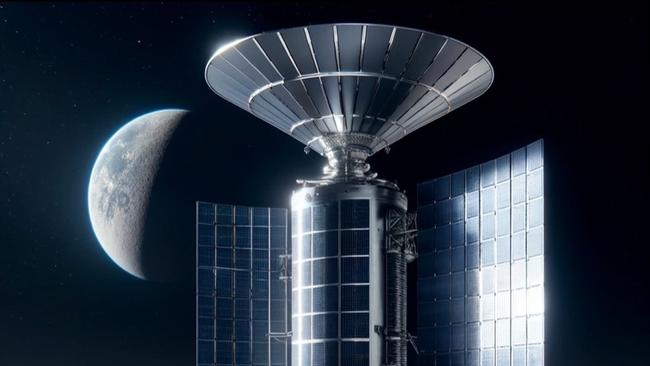Interstellar Mapping has landed £30,000 to attempt to mine water from the moon
Nicholas Barnett has never been to the moon, but he has managed to convince the UK government to give him $58,000 to attempt to extract water from its soil.

Nicholas Barnett has never been to the moon, but he has managed to convince the British government that he can extract water from its soil.
The Singapore-based Australian space engineer, 40, originally from Narromine, a rural NSW town 40km west of Dubbo with a population of just 3507, recently took home £30,000 ($58,000) from the UK Space Agency for his unusual idea.
His idea was one of 32 submitted, one of 10 that progressed and the one that came out on top, judged as the most fitting for stimulating the UK’s space economy.
The idea was for a device that stands around 2m tall, weighs 50kg and can turn the moon’s soil into purified drink water.
It was half conjured up during one of Mr Barnett’s classes at the University of NSW, where he is completing a PhD in mining on the moon.
In 2005, Mr Barnett said he became the second ever person to graduate from the University of Sydney’s Mechanical Space Engineering degree. Today, he’s based in Singapore and has founded his own company called Interstellar Mapping, which recently coined the idea that there is water in the moon’s soil.
“The system we’ve developed is really quite simple in its design,” Mr Barnett told The Australian.
The Static Water Extraction System is designed to extract 1 litre of drinking water per hour from lunar regolith in the Moon’s South Pole. To do that, it’ll consume about 1.3kW of energy.
The company uses a process similar to distilling, where moon soil is poured into the system and as it flows through, heating elements help to remove contaminants, allowing only purified water to pass through.
The heating elements will warm the soil to between about -73°C and -80°C – and while those numbers don’t sound like much, they’re quite warm for the moon, Mr Barnett said.
“Put it in the context of the moon where this is operating, the moon fluctuates anywhere from -170°C to -190°C.”
The system is designed to produce about 1 litre of drinking water from around 18kg of soil per hour. But it’s also scalable and could be built larger to produce a greater quantity.
One of the best parts about it, Mr Barnett said, was that there were no moving parts.
“Because of the flow of the product moving down the tube, it actually prevents the gases being released into the atmosphere,” he said.
The next part of the SWES development requires putting it into action. Interstellar Mapping is looking at labs in the UK where it can test replica soil – made out of basalts – in what’s called a dirty thermal vacuum chamber.
“The University of NSW is building a dirty thermal vacuum chamber and that’s going to be the first one in the southern hemisphere, but there are quite a few in the northern hemisphere where we can try testing now,” he said.
Mr Barnett said his broader mission was to prove the moon isn’t completely dry.
“After the Apollo missions, the moon was deemed completely dry and devoid of water, but there have always been people theorising that water could exist.”







To join the conversation, please log in. Don't have an account? Register
Join the conversation, you are commenting as Logout